The EMODnet Chemistry 2023 Top 5 for a good start to the new year!
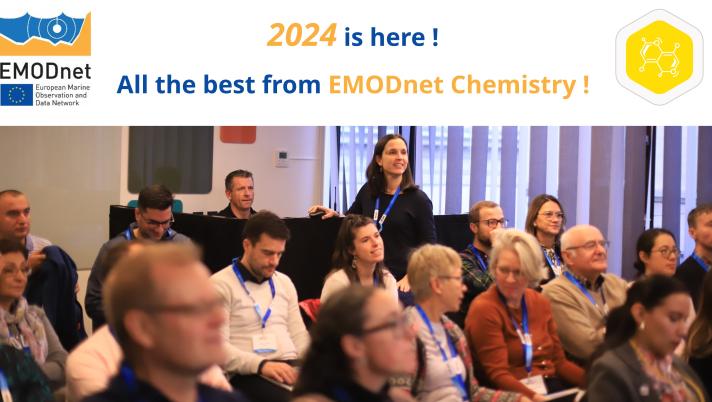
Read the Top 5 EMODnet Chemistry highlights of 2023!
1. Expanded quantity and quality of data and products
- The number of datasets have grown from about circa 1,000,000 to about 1,271,000. They are available in the EMODnet Chemistry CDI Data Discovery and Access Service, which allows users to search, select and download datasets on a wide range of water quality variables. Search for data with the CDI Data Discovery and Access Service of SeaDataNet.
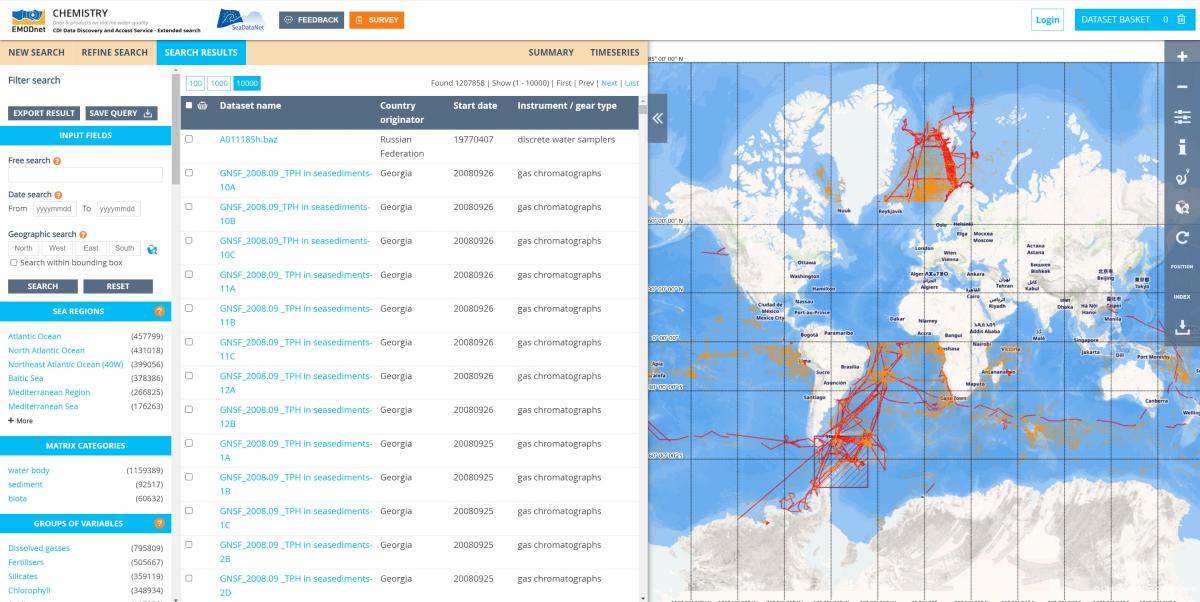
CDI Data Discovery and Access Service of SeaDataNet (©EMODnet Chemistry)
- EMODnet Chemistry produced harmonised, standardised and validated data collections for eutrophication (nutrients, chlorophyll and oxygen), ocean acidification (alkalinity and pH), contaminants (Heavy metals, Hydrocarbons, Antifoulants, Polychlorinated biphenyls, Pesticides & biocides, and Radionuclides) and for marine litter (beach litter, seafloor litter and microlitter).
Read all about the data collections on these web news on contaminants, eutrophication and marine litter.
Search for the data collections with the EMODnet Products catalogue.
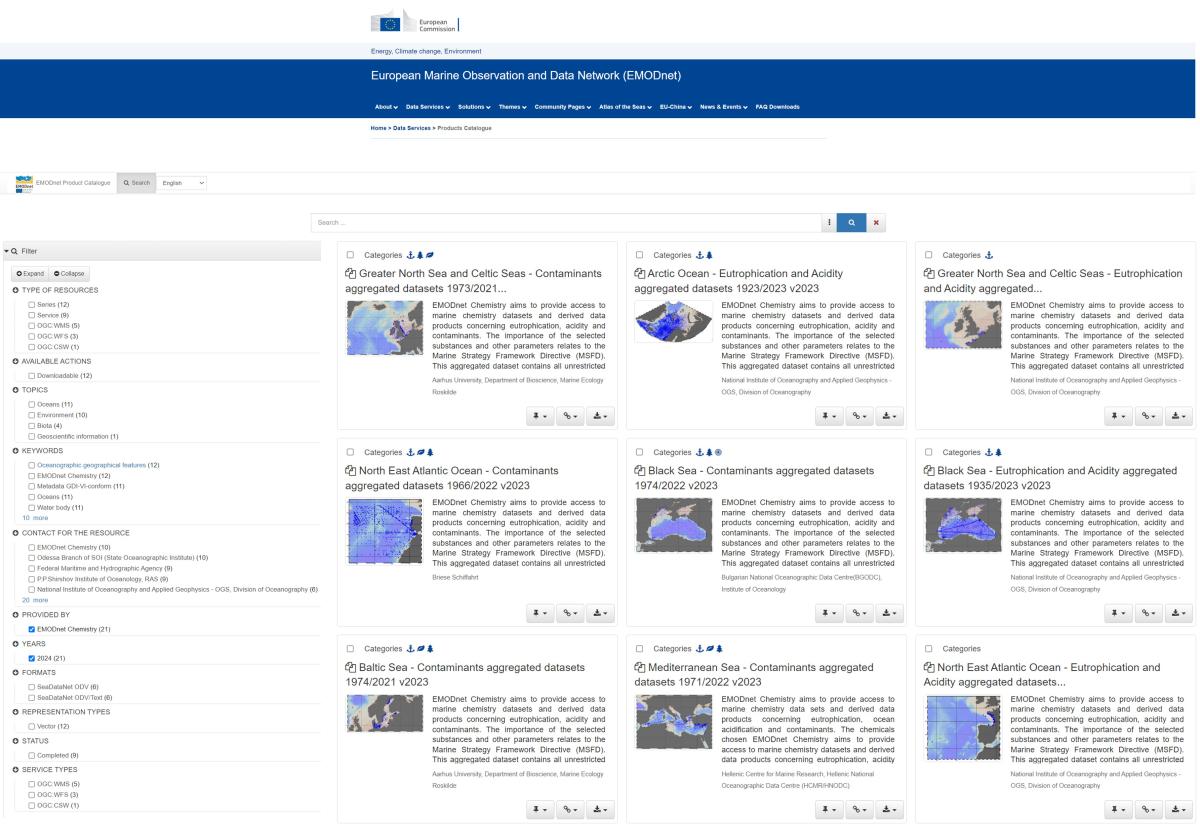
EMODnet Products Catalogue (©EMODnet Chemistry)
- A new QC questionnaire for contaminant data has been added to improve transparency of data quality, reliability and comparability. The questionnaire contains a record of field and laboratory information for chemical parameters submitted by a data producer. Forty-two questionnaires were received from 21 institutes and 18 countries. The respondents provided information on about 90% of the substances listed in the EU legislation for priority substances.
Read the EMODnet web news on the results, background and structure of the questionnaire or dive deeper into the matter with the open paper.
2. New maps for contaminants and marine litter
Twenty-five new maps for contaminants and 19 for marine litter were created on the basis of the data collected. For contaminants, the layers are divided into four categories of maps that provide information on the spatial distribution of sampling stations and data availability per matrix and per parameter over the years. For marine litter, this version contains for the first time 16 maps for floating microlitter in all European sea basins and beyond and three new ones for seafloor litter. These new maps enrich the EMODnet Chemistry products portfolio on this topic, which also include 18 beach litter maps and other 5 seafloor litter maps.
Read the EMODnet web news on contaminant and marine litter maps and go to EMODnet Map Viewer to find them all!
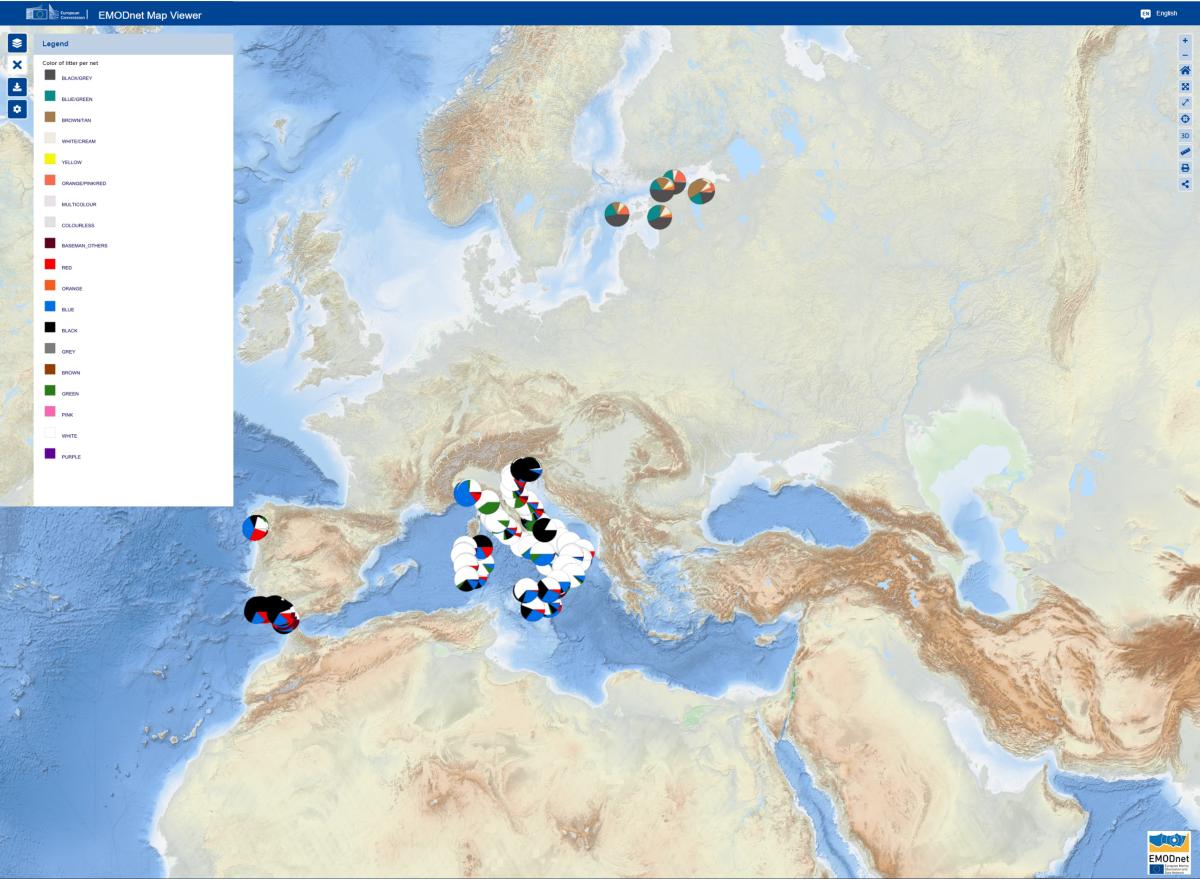
Floating microlitter: colour of litter per net (©EMODnet Chemistry)
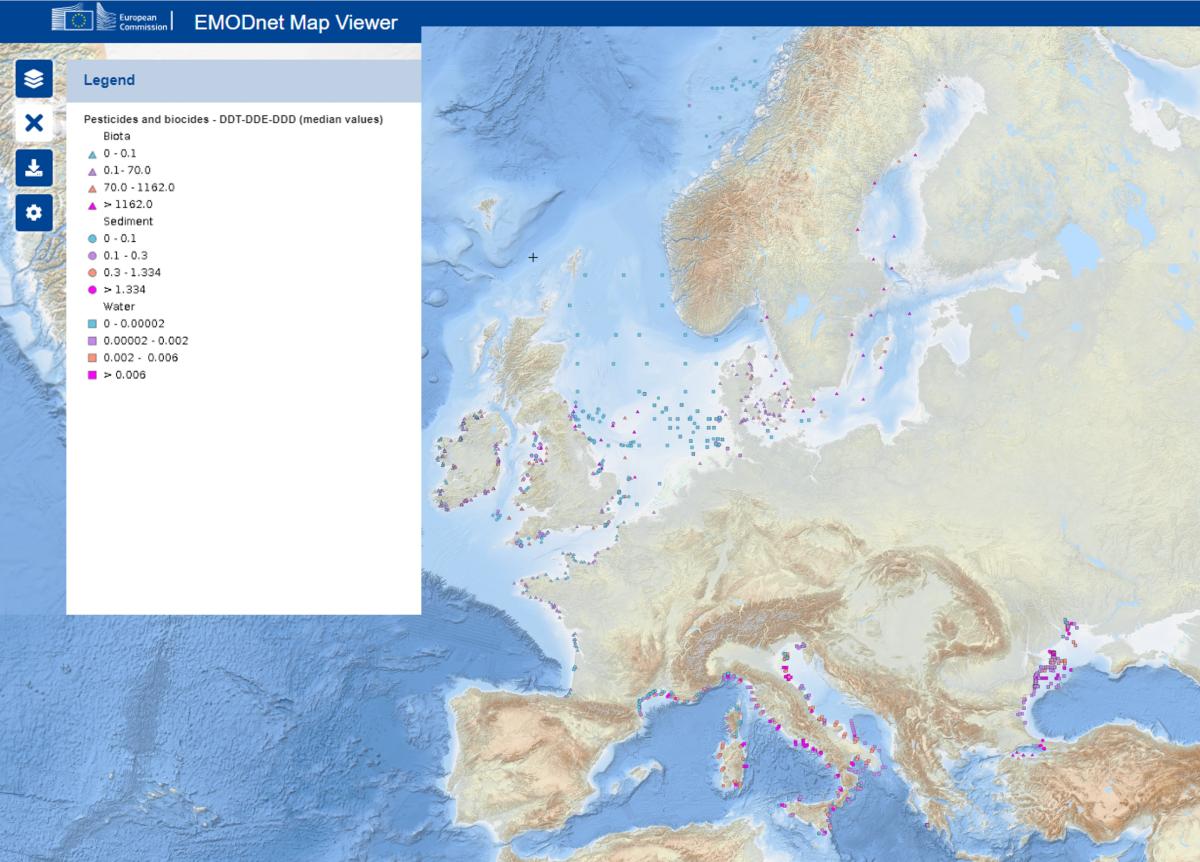
Pesticides and biocides: DDT-DDE-DDD (median values) (©EMODnet Chemistry)
3. Expanded functions of the WebODV Service
The Chemistry WebODV Explorer and Extractor Service for interacting online with the harmonised and validated data collections for eutrophication, ocean acidification, and contaminants has been expanded to facilitate publishing maps as OGC WMS-WFS service.
Read more about what this tool can do for you and try it out here.
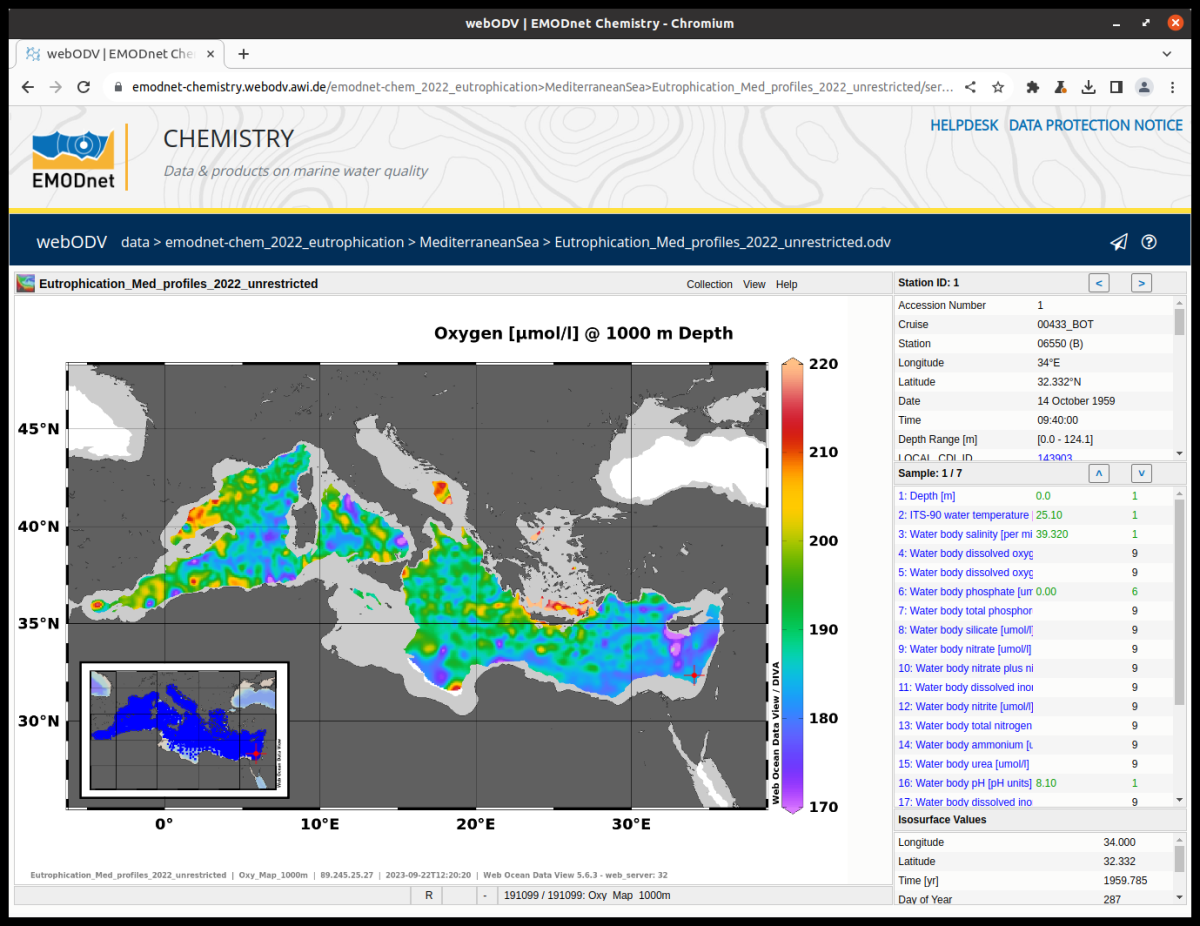
Oxygen distribution in the Mediterranean Sea at a depth of 1000 metres (©CC0 1.0)
4. Tireless support for the Marine Strategy Framework Directive (MSFD)
- For the MSFD reporting on Descriptor 5, Descriptor 8 and Descriptor 9, the latest data collections for eutrophication and pollutants were made available to the European Commission Joint Research Centre (EC-JRC) for the first time. Each collection covers one of the following marine regions: Arctic Ocean, Baltic Sea, Greater North Sea, North-East Atlantic, Mediterranean Sea and Black Sea. The methodology agreed with the international community for the aggregation, harmonisation and validation of the data is set out in the 2023 guidelines EMODnet Chemistry Regional Sea eutrophication data collection and Quality Control loop.
- Since 2017 EMODnet Chemistry Project has collaborated with the EC-JRC, co-chair of the MSFD Technical Group on Marine Litter, to improve the FAIRness of marine litter data: Findability, Accessibility, Interoperability and Reusability. Since then, this win-win co-operation has led to several results, such as the calculation of the EU Marine Litter quantitative Baseline and the definition of the first EU ML quantitative Threshold Value
by using EMODnet Chemistry data. In 2023 the EC-JRC released the new edition of the Guidance on Monitoring of Marine Litter in European Seas. The new guidance, first published in 2013, aims to make data comparable and usable across countries by adopting a common approach to marine litter monitoring: a prerequisite for comparable data on marine litter pollution. - Read the guidance, which is also available on the EMODnet Chemistry Ocean Best Practices System Repository
5. Rewarding feedback from the European Commission
- The confirmation of the same partnership at the head of EMODnet Chemistry for the next two years by the European Climate, Infrastructure and Environment Executive Agency (CINEA) is the best reward for the work done since 2009. The same consortium of 44 institutes, acting as partners, subcontractors and advisories, will continue to lead EMODnet Chemistry. It will be supported by experts from the Regional Sea Conventions and in the Marine Strategy Framework Directive.
Leading EMODnet Chemistry is an honor, but also a challenge. The partnership has accepted the challenge with enthusiasm and will once again prove its worth. A sincere thank you to all those involved in the project for their contribution and support over the years.
